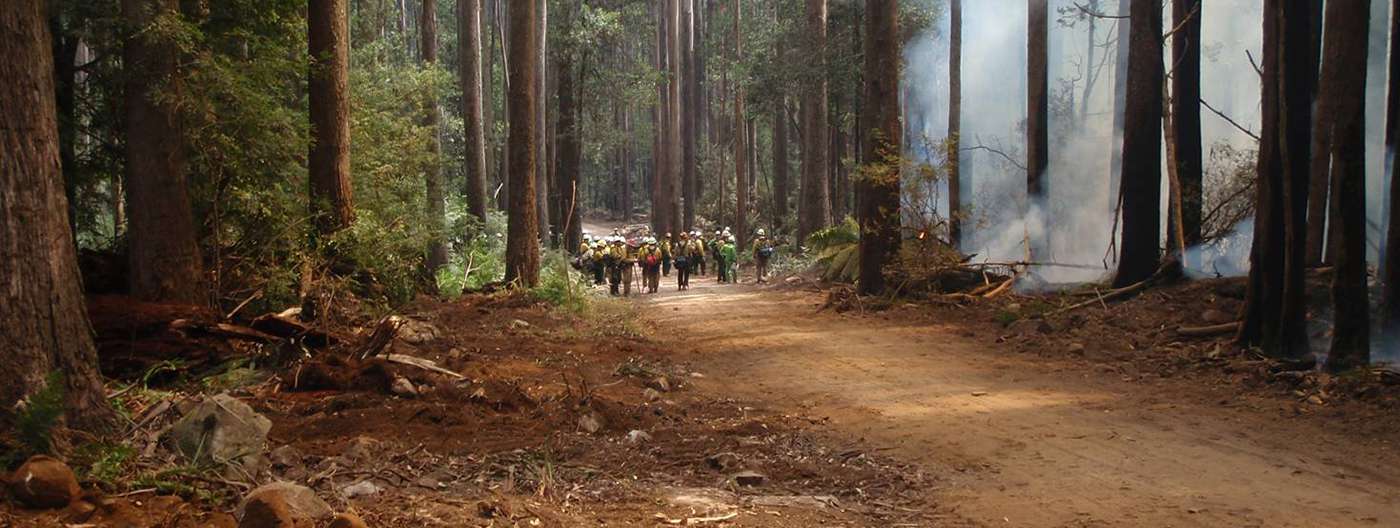Characteristics
- Residential and agriculture
- Water and power infrastructure for Melbourne
- 59% of Victoria's population
- Half of people live in peri-urban areas
- Home to iconic Leadbeater's Possum and Helmeted Honeyeater
Fuel management
- Intensive fuel management close to communities and valuable plantations
- Fuel management adjacent to wet forests which cannot be burnt
- Excluding burning in areas to protect ecosystem values
- Working with communities to manage fuel on private land

Environmental metrics
Understanding the impact of fire on ecosystems requires first being able to define and measure ecosystem resilience. Tolerable Fire Interval and Vegetation Growth Stage Structure are used as indicators of ecosystem resilience at a regional level. These allow us to better understand ecosystem resilience and the impacts of fire.
Current and historic Tolerable Fire Interval and Vegetation Growth Stage Structures for the Port Phillip region are available in the Fuel Management Report
Strategic bushfire management planning
Strategic bushfire management planning is about bringing together land and fire managers, communities and stakeholders to develop a common understanding of bushfire risk and determine strategies and actions to reduce that risk.
This planning is informed by world-leading, bushfire behaviour modelling and research into community values that can be affected by bushfires. It brings together multiple perspectives to set agreed objectives for regional bushfire management.
The key output of strategic planning is six new Bushfire Management Strategies aligned to each of the Victorian Government Regions:
Download the Bushfire Management Strategy (PDF 10.8MB)
Download the Bushfire Management Strategy (Word Accessible 17MB)
The Strategic bushfire management planning process is jointly delivered by Forest Fire Management Victoria (FFMVic), Country Fire Authority (CFA), Emergency Management Victoria (EMV), and local government in consultation with communities. For more information about the Strategic Bushfire Management Planning process, see the Strategic Bushfire Management Planning page.
Page last updated: 28/09/23